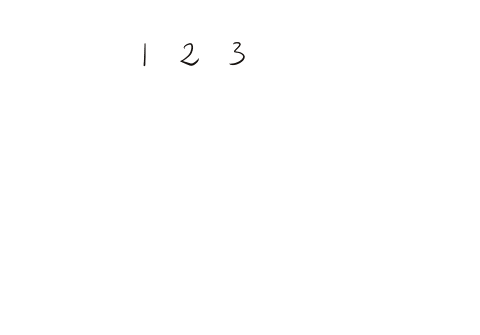整数的基本运算
上一节讲到,在 PyLong_Type 中定义了整数类型的各种属性,比如整数类型的名称 “int”。整数对象最常用的是一些数学运算,整数对象当然也是支持这些方法的,它们定义在:
// Object/longobject.c:5632
PyTypeObject PyLong_Type = {
PyVarObject_HEAD_INIT(&PyType_Type, 0)
"int", /* tp_name */
offsetof(PyLongObject, ob_digit), /* tp_basicsize */
sizeof(digit), /* tp_itemsize */
0, /* tp_dealloc */
0, /* tp_vectorcall_offset */
0, /* tp_getattr */
0, /* tp_setattr */
0, /* tp_as_async */
long_to_decimal_string, /* tp_repr */
&long_as_number, /* tp_as_number */
/*
************忽略了一些代码************
*/
PyObject_Del, /* tp_free */
};
注意其中 &long_as_number 一行,它是一个函数指针数组,其中定义了整数的一系列数学方法,我们在用整数对象进行数学计算的时候,实质上调用的是这个数组里的指针。
// Object/longobject.c:5595,就在 PyLong_Type 定义上方
static PyNumberMethods long_as_number = {
(binaryfunc)long_add, /*nb_add*/
(binaryfunc)long_sub, /*nb_subtract*/
(binaryfunc)long_mul, /*nb_multiply*/
long_mod, /*nb_remainder*/
long_divmod, /*nb_divmod*/
long_pow, /*nb_power*/
(unaryfunc)long_neg, /*nb_negative*/
long_long, /*tp_positive*/
(unaryfunc)long_abs, /*tp_absolute*/
(inquiry)long_bool, /*tp_bool*/
(unaryfunc)long_invert, /*nb_invert*/
long_lshift, /*nb_lshift*/
long_rshift, /*nb_rshift*/
long_and, /*nb_and*/
long_xor, /*nb_xor*/
long_or, /*nb_or*/
long_long, /*nb_int*/
0, /*nb_reserved*/
long_float, /*nb_float*/
0, /* nb_inplace_add */
0, /* nb_inplace_subtract */
0, /* nb_inplace_multiply */
0, /* nb_inplace_remainder */
0, /* nb_inplace_power */
0, /* nb_inplace_lshift */
0, /* nb_inplace_rshift */
0, /* nb_inplace_and */
0, /* nb_inplace_xor */
0, /* nb_inplace_or */
long_div, /* nb_floor_divide */
long_true_divide, /* nb_true_divide */
0, /* nb_inplace_floor_divide */
0, /* nb_inplace_true_divide */
long_long, /* nb_index */
};
通过结构体成员的命名就可以大致看出这些函数的作用,注意到其中一些方法没有实现,被设置为 0,这些是目前整数对象不支持的方法。绝大多数函数功能都不是很复杂,这里以比较复杂的乘法稍作解释。
三种的乘法的实现
第一种,也是最简单的,对于那些大小在 1 digit 的整数,直接通过 a * b 计算,一条 CPU 指令就可以得到结果。
第二种稍微复杂一点,对于那些不能在一个寄存器宽度内计算长整数,可以采用算式模拟(gradeschool math)。其原理非常简单,需要回顾小学的乘法竖式。假如 a = 123, b = 45, 计算 a * b.

将两个长整数乘法转换为一个长整数与 1 位整数按位相乘,结果求和的过程。这个方法不仅在 10 进制下,其他进制下也是成立的。
第三种是 Python 实现用用到的 Karatsuba 算法,这是一种快速实现长整数乘法的算法。其基本原理是将长整数按照一个基数 X 分解为 high、low 两部分,对于两个长整数 a,b 有:
$$ a b = a_{hi} b_{hi} X X + (k - a_{hi} b_{hi} - a_{lo} b_{lo}) X + a_{lo} b_{lo} $$
其中 $k = (a_{hi} + a_{lo}) * (b_{hi} + b_{lo})$ ,这样就把一个长整数乘法转换为:
- $a_{hi} * b_{hi}$
- $(a_{hi} + a_{lo}) * (b_{hi} + b_{lo})$
- $a_{lo} * b_{lo}$
三个长度更短的整数运算,利用递归思想,长整数的运算很快被转换为一系列短整数乘法。
整数乘法的优化
Python 在实现整数乘法时做了三个优化,
第一个:
// Object/longobject.c:3551
static PyObject *
long_mul(PyLongObject *a, PyLongObject *b)
{
PyLongObject *z;
CHECK_BINOP(a, b);
/* fast path for single-digit multiplication */
if (Py_ABS(Py_SIZE(a)) <= 1 && Py_ABS(Py_SIZE(b)) <= 1) {
stwodigits v = (stwodigits)(MEDIUM_VALUE(a)) * MEDIUM_VALUE(b);
return PyLong_FromLongLong((long long)v);
}
z = k_mul(a, b);
/* Negate if exactly one of the inputs is negative. */
if (((Py_SIZE(a) ^ Py_SIZE(b)) < 0) && z) {
_PyLong_Negate(&z);
if (z == NULL)
return NULL;
}
return (PyObject *)z;
}
如果整数的长度只有一个 digit,也就是 30 bits,那么就可以走捷径,直接用 C 语言内置乘法计算结果,仅从计算效率上来说,与 C 语言一样。
如果整数长度大于 1 个 digit,那么就去 k_mul 函数:
/* Karatsuba multiplication. Ignores the input signs, and returns the
* absolute value of the product (or NULL if error).
* See Knuth Vol. 2 Chapter 4.3.3 (Pp. 294-295).
*/
static PyLongObject *
k_mul(PyLongObject *a, PyLongObject *b)
{
Py_ssize_t asize = Py_ABS(Py_SIZE(a));
Py_ssize_t bsize = Py_ABS(Py_SIZE(b));
PyLongObject *ah = NULL;
PyLongObject *al = NULL;
PyLongObject *bh = NULL;
PyLongObject *bl = NULL;
PyLongObject *ret = NULL;
PyLongObject *t1, *t2, *t3;
Py_ssize_t shift; /* the number of digits we split off */
Py_ssize_t i;
/* (ah*X+al)(bh*X+bl) = ah*bh*X*X + (ah*bl + al*bh)*X + al*bl
* Let k = (ah+al)*(bh+bl) = ah*bl + al*bh + ah*bh + al*bl
* Then the original product is
* ah*bh*X*X + (k - ah*bh - al*bl)*X + al*bl
* By picking X to be a power of 2, "*X" is just shifting, and it's
* been reduced to 3 multiplies on numbers half the size.
*/
/* We want to split based on the larger number; fiddle so that b
* is largest.
*/
if (asize > bsize) {
t1 = a;
a = b;
b = t1;
i = asize;
asize = bsize;
bsize = i;
}
/* Use gradeschool math when either number is too small. */
i = a == b ? KARATSUBA_SQUARE_CUTOFF : KARATSUBA_CUTOFF;
if (asize <= i) {
if (asize == 0)
return (PyLongObject *)PyLong_FromLong(0);
else
return x_mul(a, b);
}
// 下面是 Karatsuba 算法,代码较多不再贴出来
注释中简要描述了 Karatsuba 算法的步骤,如果 a、b 的长度小于一个阈值,那么就使用 gradeschool math 算法计算长整数乘法,这么做的主要原因是低于这个阈值 Karatsuba 算法不再有优势,另外,这个条件也是 k_mul 函数递归调用的退出条件,否则递归永远不会结束。更长的整数乘法才会使用 Karatsuba 算法计算,前一部分介绍 Karatsuba 算法已经看到,Karatsuba 算法是将长整数拆分为若干个短整数的乘法和加法,其中乘法会尝试递归使用 Karatsuba 算法,直到拆分到足够短的整数满足退出条件。

